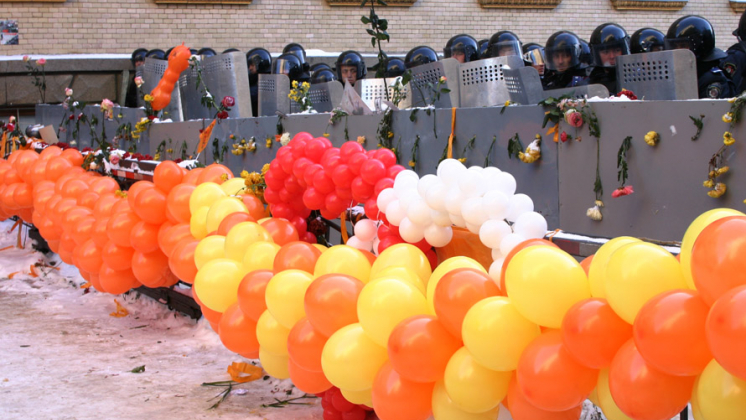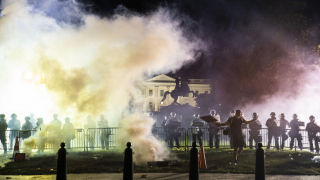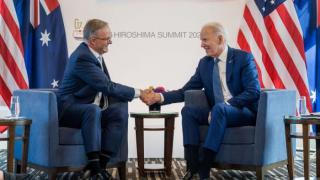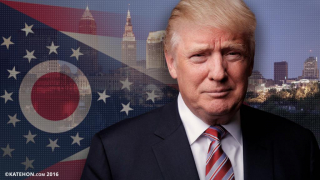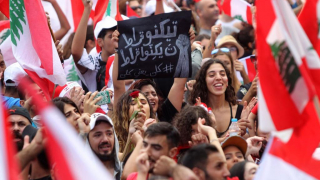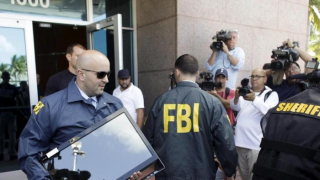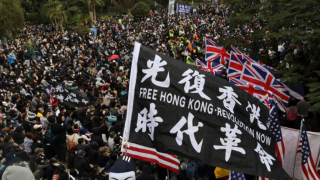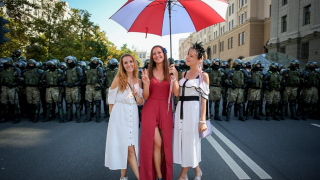Hybrid Wars and Geopolitics
27.10.2017
1. Many thanks for investigating and writing this book named "Hybrid Wars".
Thank you, Enrique, and thanks for translating it into Spanish.
2. What was your inspiration for beginning the book? How did it start?
I’ve always been interested in the US’ regime change operations all across the world, and as I was coming of age in the US, I started noticing this trend of so-called “Color Revolutions”. I was fascinated by how people could just supposedly stream into the street and overthrow their government, and I knew that there was more behind the story than was being publicly disclosed. Although American media is heavily censored in terms of what they do and don’t report, I’ll never forget reading very short passages in the newspaper about how Russia officially accused the US of orchestrating these events in order to overthrow non-compliant governments and achieve geopolitical ends.
I started researching Color Revolutions when I was in high school and acquired reliable access to the internet from the school’s library computers. At the time, the only Russian-based source which I could find was the English-language version of RIA Novosti, now incidentally part of the Sputnik brand where I’m presently employed. I wasn’t able to find as much information as I wished I could have, but it was still a very helpful and enlightening experience. Also, I was still just a kid in high school and was mostly using the school’s computers for my research, so I didn’t have a lot of time to devote to this activity anyhow.
Nevertheless, I was profoundly moved by the realization that the US’ intelligence services could engineer “non-violent” regime changes using manipulated crowds of people and select provocateurs, and when it became time for me to apply to college and choose what I wanted to study, I decided to pursue International Studies (focusing on Eastern Europe) at The Ohio State University. I later added two other majors, International Relations & Diplomacy and Russian Language, but I was primarily driven to learn more about US’ strategies towards Russia in order to better predict how they could unfold in the coming future and thus one day hopefully be in a position to prepare countermeasures for obstructing it.
I always had this dream in my mind of one day moving to Russia and helping the country which I feel so close to and associate so deeply with, so I figured that my education in these fields could be useful in preparing me for that. I talked more at length about my personal motivations for moving to Russia as part of an exclusive interview that I gave to my Serbian friend and fellow journalist Stefan Karganovic last spring, and I’d welcome you and any interested readers to check it out at The Saker blog, where the English-language version was published.
To get back to talking about my inspiration for writing Hybrid Wars, though, the second most important moment came during the 2011 “Arab Spring” events, which I immediately recognized as a series of Color Revolutions, but which interestingly devolved into a few high-profile Unconventional Wars. I was already somewhat familiar with guerrilla warfare and insurgencies, having studied these independently in my free time whenever the opportunity allowed, but it wasn’t until 2014 that I finally put two and two together and realized that the US was deploying a patterned strategy of transitioning failed Color Revolutions into Unconventional Wars.
The creative spark for my inspiration came during a conversation that I was having with one of my close Syrian colleague at the Moscow State Institute of International Relations (MGIMO), where I was pursuing my master’s in International Relations at the time. We were talking about the EuroMaidan regime change events at the time and she casually remarked that it was so surprising for her to see those “protesters” tearing down Lenin statues and destroying their own heritage. It reminder her, she said, of what the “moderate rebel opposition” was doing all throughout her country.
And that’s when it hit me – what was happening in Ukraine was essentially the opening strategy of the exact same type of campaign which preceded it in Syria, and that there were many strategic structural similarities between these two American regime change operations. I was instantly moved to expand upon this conclusion as deeply as I could in identifying the hidden commonalities between them in order to see if it would be possible to postulate a working theory which could be used in analyzing these occurrences and future ones like it. Luckily, being in the MGIMO master’s program, we had to write a thesis before graduating, so I was able to persuade my supervisor to allow me to conveniently pursue this idea.
My book, or at the time, thesis, took only one week to physically write, but it required almost continuous research over a six-month period in order to prepare for it by gathering all of the necessary sources and organizing them in a cohesive way. Additionally, I was greatly aided by the fact that I had been researching and analyzing International Relations for many years by that point, so I was already very familiar with a variety of seemingly separate conflicts and regime change operations all across the world, which helped me to more easily connect the dots in seeing the hidden relationships between those events. Ultimately, I became convinced of the veracity of my Hybrid War theory, and fiendishly worked day and night to complete my work.
I wasn’t satisfied when I finished, however, since I knew that writing a master’s thesis for an elite university wouldn’t change anything whatsoever unless the general public had an opportunity to become familiar with my work. I thus embarked on a quest to publish the book myself. It initially wasn’t successful, but I never lost hope because of how passionate I felt about exposing the US’ Hybrid War strategy to the rest of the world. By a stroke of what I sincerely believe in hindsight to be God-given luck, an MGIMO professor which I never met before, Mr. Denis Degterev, contacted me through my university email to ask me to contribute to his academic journal because he had heard many good things about me from his fellow professors.
This was in April 2015, almost 10 months or so after I finished writing Hybrid Wars. I responded that I was very interested in submitting a text to him one of these days, and I also sent him a few links to some of the work which I had already published online by that time. After taking a look at it, Mr. Degterev suggested that I reach out to his colleague at the People’s Friendship University of Russia (RUDN), Mr. George Filimonov, who is very active in anti-Maidan (counter-Color Revolution) activity and research. It was through George and his Institute of Strategic Research and Predictions that I was ultimately able to publish Hybrid Wars in print and thenceforth introduce it to the rest of the world, and I’ll forever be grateful to him and Mr. Degterev for making this dream a reality.
At the end of the day, however, had it not been for close Syrian colleague's inspiration, I probably would never have even formulated my theory in the first place, so I extend my sincerest thanks to her as well for playing such a crucial role in its development.
3. How do you define a “Color Revolution” to someone who doesn’t know anything about it? How important are “Color Revolutions” for an average person? What consequences exist for ordinary people?
Color Revolutions can generally be thought of as externally organized or foreign-triggered “people’s protests” which aim to overthrow the government through supposedly ‘peaceful’ means. In reality, Color Revolutions have a disturbing trend of devolving into urban terrorism and rioting, but the Western perception of these movements is that they’re “peaceful” and that any violence on their part is due to “provocations” from the government. Again, the reality of the situation refutes this characterization, since Color Revolution violence is triggered by the “protesters” themselves, whether through a mob which has formed as a result of the weaponized crowd psychology that the organizer’s expected, or through a few provocateurs on their side.
What’s most frightening about Color Revolutions is that they seem to be “legitimate” “people’s protests”, but that’s just the superficial narrative initially promoted by the Western Mainstream Media. It’s a very uncomfortable feeling to think that thousands – sometimes hundreds of thousands – of people can partake in an event which was in one way or another organized by foreign elements. This doesn’t mean that everyone holding a placard and marching through a town square is a “foreign agent”, but just that they’re being manipulated as “useful idiots” in helping to achieve the same grand strategic objective that the outside elements are aiming towards.
Color Revolutions therefore work best when there is some degree of genuine dissatisfaction towards a targeted government or part of its agenda, as this helps to ‘naturally’ attract more people to the incipient regime change movement by easing the ‘entrance cost’ of gaining access to their populations’ trust. If people are already questioning their government – whether on their own or due to informational preconditioning from anti-government elements (whether domestic or foreign) – then they’re already a lot more receptive to the sort of rhetoric spewed by Color Revolution organizers and their backers.
Sometimes it overtly calls for overthrowing the government through its “resignation”, or progressively gets to that point and reveals its true regime change intention after a preplanned provocation prompts that state to respond with force against the “protesters”. In the face of what they then market as “state violence and oppression”, they go on to argue that the government has “lost legitimacy” and must therefore “resign”, though each “resignation” outcome is a lot easier said than done and is “encourage”" by urban terrorism, a split in the governing and security elite, and of course, foreign intervention – whether conventional military as in Libya, covert political-organization like in Ukraine, or through terrorist groups like in Syria.
What starts off as a “people’s protest” could thus devolve into a civil and/or international war depending on the circumstances, scenarios, and motivations involved. While all-out warfare is a more common consequence of failed Color Revolutions in non-Western societies, Western ones face similar risks, albeit of a lesser intensity and mostly organized along the lines of racial-social conflict. In some cases, the US might try to catalyze low-scale Color Revolution destabilizations in “allied” states such as Germany and France in order to pressure their governments away from pragmatic engagement with Russia, or in some cases, to serve as a pretext for totalitarian repressions.
What’s important to keep in mind, however, is that not every protest is a Color Revolution, but every Color Revolution involves a protest. There are certainly many legitimate protests that take place all across the world and have no trace of foreign meddling in them (be it through intelligence agencies, “NGOs”, or otherwise), but at the same time, the moment that a protest becomes linked to a foreign agenda, then it takes on the hues of a Color Revolution, no matter it’s full and ultimate extent (as such destabilizations are sometimes deployed as a ‘test’ to probe the state’s reaction and defenses).
Even so, a Color Revolution is most accurately defined as a Western-concocted “people’s revolution” against the government which aims to achieve favorable geopolitical objectives for the US and its allies, as it’s indeed possible in theory for Russia, China, and Iran to support foreign protest movements in order to promote multipolar ends. Some have argued that the run-up to the reunification of Crimea with Russia was marked by some Moscow-backed Color Revolution tactics, just like the popular uprising in Bahrain was supported (but not engineered, which is an important distinction) by Iran. I wrote about this in an article for The Saker blog in April 2016 titled “Color Revolution Technology Isn’t Just Black And White”, during which time I termed this possible phenomenon as a “reverse-Color Revolution”.
The key difference between “conventional”/Western Color Revolutions and their theorized multipolar counterparts is that the former involves considerable organizational, intelligence, logistical, and sometimes even military support, while the latter is mostly political and informational. Another important contrast between them is that the first usually and very quickly leads to violence and urban terrorism, while the latter eschews these tactics and concentrates on peaceful protest and non-violence resistance.
It’s important to note, however, that there are also “reverse-Color Revolutions” which don’t involve any multipolar foreign power, such as the anti-NATO movements in Serbia and Montenegro, and the patriotic manifestations in the Republic of Macedonia which defeated the US’ two back-to-back Color Revolution attempts. These instances prove that Color Revolution technology has now proliferated from the realm of Western “non-state actors” to non-Western ones which are genuinely outside of the control of any foreign state. It also gives hope that some of the most creative non-violent elements of Color Revolution technology could be used both for undermining unipolar governments and strengthening multipolar ones against Western subversion.
4. Concerning the second stage of Hybrid Wars, how do you define “Unconventional Warfare” for someone who isn’t familiar with this? And again, how important is this for average people, and what are the consequences for them?
“Unconventional Warfare” can easily be summed up as violence committed by anyone outside of a military uniform and for political ends. In practical relevance to the topic that we’re discussing, Unconventional Warfare begins to break out the moment that a “protester” throws rocks or molotovs, and it becomes most extreme when individuals resort to guerrilla warfare or terrorism. I spoke about the proclivity of Western-sponsored Color Revolutions to resort to violence, and this stage of the regime change process is actually the start of Unconventional Warfare. Sometimes, as is the most recent pattern, “protesters” will eventually turn into “rebels” or urban terrorists, and this marks the total transformation of the “peaceful protester” into a cold-blooded fighter and the completion of the Hybrid War process.
It’s true that someone might get caught up in the moment and commit a crime of “political passion” such as shoving a police officer or assaulting a counter-protester, and while that does in principle represent Unconventional Warfare, it’s not going past the threshold of no return for the individual. Only once a person carries out actual terrorism or rebel activities can they be said to be “irredeemable” in the Hybrid War battleground sense. They might one day disavow their former behavior and return back to being a law-abiding citizen, but such an eventuality most likely isn’t possible for the individual so long as the Hybrid War is still being waged and only becomes conveyable after the conflict finally ends. Unconventional Warfare is the second and most logical stage of a Color Revolution becomes it’s the “logical” intensification of the failure of a “peaceful” “people’s revolution” to overthrow a government.
Faced with defeat in the streets, the foreign organizers may not want to give up on their objective, hence why they encourage their in-country cohorts to partake in violence and Unconventional Warfare in order to escalate the political crisis and bring it to the qualitatively new level of a national security emergency. Had a “rebellion” (as the Western Mainstream Media regularly paints it) or “freedom insurgency” broken out in the countryside without first testing the concept to publicly demonstrate whether there’s any “public support” for this or not (which itself doesn’t objectively matter since it’s the subjective reporting and filming of protest manifestations that count), then it would be less believable to the global audience that the given fighters have any “legitimacy”.
However, if this occurrence follows a failed Color Revolution which the West can market as having been defeated solely due to the “tyrannical authoritarian killings” of a “dictatorship”, then it takes on a totally different meaning and becomes a “cause” for the “global” (Western) public to rally around. To illustrate the difference between a Color Revolution and an Unconventional War (the second stage of Hybrid War), one needs only to remember that the 2000 “Bulldozer Revolution” in Serbia was a Color Revolution, whereas the War of Terror on Syria is an Unconventional War which grew out of the failed “Arab Spring” theater-wide Color Revolutions. In between these two is the urban terrorist spree popularly known as “EuroMaidan”, which unbeknownst to many people also included a low-intensity Unconventional Warfare component in the Western Ukrainian countryside.
5. What is you brief forecast about this year’s Hybrid Wars? We see a new round of war in Donbas; Syria, Iraq, Yemen, and Libya are on fire; possible new conflicts are emerging in unstable zones... and of course the situation in the European Union and the new president of the USA have many people worried.
Neither of the first five-mentioned conflicts are Hybrid Wars in the sense of how I’ve defined them – they indeed started off as failed Color Revolutions which transitioned to Unconventional Warfare, but the only enduring part of this pattern is that they’re still embroiled in physical conflict. There’s little to no interplay between the two pillars of Hybrid War – Color Revolutions and Unconventional Warfare – because the military part of the war has been raging for years already in each case, some longer than others. While it’s correct to look at them as having been Hybrid Wars, it would be inaccurate to refer to them as still being this sort of conflict, at least as it relates to my definition. That being said, in terms of the ‘conventional’ understanding of Hybrid Wars, then yes, there’s still a complex relationship between economic, information, and other types of warfare, though it should be remembered that the Color Revolution spark which catalyzed these conflicts has long faded.
Looking at Europe and US, indeed, there are clear indications that Color Revolutions are being organized, deployed, and in some cases such as the Republic of Macedonia, teetering on the verge of Unconventional Warfare and thus becoming Hybrid Wars. Regarding the EU and the US, this stratagem is being unleashed by neoliberal forces largely connected to George Soros in order to push back against the pro-sovereignty gains of various politicians and prevent the self-implosion of the so-called “New World Order”. It’s unclear to what extent this will ultimately go, but it’s conceivably possible that it could lead to Identity Warfare, whether by design or accident, which would manifest itself as racial clashes in the US and Christian-Muslim ones in the EU.
However, when forecasting the most likely Hybrid Wars in the future, it’s important to refer to my research on The Law Of Hybrid Warfare, a concept which I unveiled around half a year after publishing my book. I wrote about it more in detail for Oriental Review in an article of the same name that I later expanded into a running series, but the general idea is as follows:
The grand objective behind every Hybrid War is to disrupt, control, or influence multipolar transnational connective projects through externally provoked identity conflicts (ethnic, religious, regional, political, etc.) within a targeted transit state.
With this axiom as the guiding logic, it’s possible to predict that the countries which are part of Russia’s Eurasian Union and CSTO regional integrational projects are potential targets for future Hybrid Wars, but even more likely than those are the states which are cooperating on China’s One Belt One Road vision of global infrastructure connectivity, which has a worldwide scope and encompasses “The Greater Heartland” of Central-South Asia, the Balkans, Indochina (mainland ASEAN), the transoceanic swatch of West-Central-East African states, South America, and Nicaragua. I’ve already expanded on most of these scenarios through intensive country and region studies for Oriental Review, which is presently releasing the African component of my research. Katehon will hopefully publish my upcoming book about 21st Century Geopolitics in South America, and one of these days I hope to write a follow-up which incorporates Central America, the Caribbean, and Mexico.
In summary, while Color Revolutions and Unconventional Wars can theoretically be stand-alone destabilizations, they oftentimes intersect with one another through the process of phased transition which I called Hybrid Wars, and one of the most common denominators linking these sorts of conflicts is their geopolitical consequences in disrupting transnational connective infrastructure projects. So long as observers keep these basic principles in mind, it’ll be possible to predict the next Hybrid Wars, and clearly identify seemingly unexpected ones them once they’re happening.
6. Thanks a lot for granting us the interview, and I hope that I can translate more articles and books from you because there are more and more people who are interested in the issue of Hybrid Wars due to it being the new way to wage the war all around the world.
Thanks a lot, Enrique, and thank you to all for the readers for being interested enough in my ideas to read this interview all the way to the end. I’m very grateful for your support and I hope that you’ll enjoy following my work.
DISCLAIMER: The author writes for this publication in a private capacity which is unrepresentative of anyone or any organization except for his own personal views. Nothing written by the author should ever be conflated with the editorial views or official positions of any other media outlet or institution.

